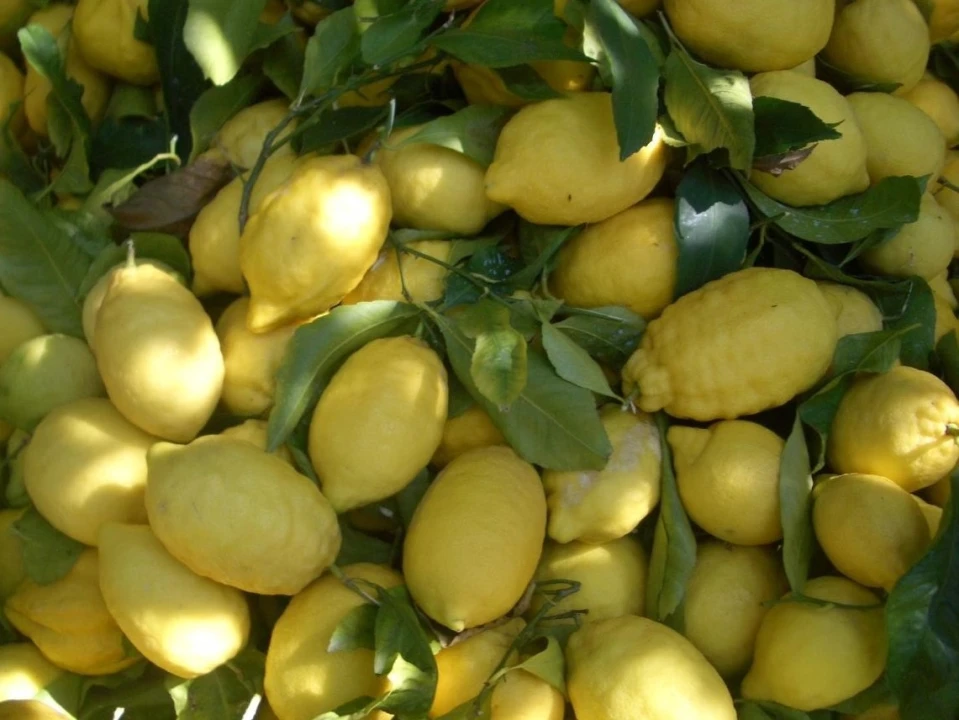The Amalfi Coast represents a mirabile example of how the agricultural landscape can characterize a geographic area.
The sweet degrading of the terraced gardens with lemon groves, the evocative contrast of colors between the green of the leaves and the blue of the sea, the penetrating scent of zagare (lemon blossoms), make the Amalfi Coast a unique landscape in its kind. It's this "the country where the lemons bloom", whose beauty has been a lot admired from poets and artists of all the times.
It's sure that Amalfi lemons were known during the Roman time: some mosaics and frescoes of Ercolano and Pompei reveal it. The lemons were initially used for their aesthetic and aromatic qualities and were cultivate just as ornamental plants.
Historical background
The presence of lemon groves along the Amalfi Coast in ancient times is mentioned in numerous historical documents. The Arabs, during their expansion and conquests, introduced the lemon to Spain and Sicily, and from there to Campania region. The true development of lemon growing in the Amalfi area, however, was mainly due to the proven need of this fruit following the discovery of its great usefulness for preventing scurvy, a disease caused by a deficiency of vitamin C, in which citrus fruits are notoriously rich. For this reason, already in the eleventh century, the Amalfi Republic decreed that its ships should always be stocked with supplies of lemons. Between 1400 and 1800, the demand for Amalfi lemons was very high, also from other countries, particularly those of northern Europe, due to their use in preventing scurvy. The local historian Matteo Camera wrote that in 1600 "lemons were shipped from Minori to other Italian markets, together with limoncello and cetrangoli (bitter oranges)". Thus, along the coast, the "lemon gardens," as lemon groves are called in this area, gradually increased in number and size over the centuries, through an enormous human undertaking to reclaim steep and inaccessible terrain for agriculture. After 1500 the lemon presence in the area was documented by several authors and in a XVII century text a "limon amalphitanus" is mentioned, whose characteristics are very similar to the Amalfi Coast "sfusato". Many documents and photographs of the XX century reveal the intense commercial traffic for the shipment of lemons and other citrus produced on the Amalfi area.
Description
The name of the sfusato amalfitano variety, used for Protected Geographical Indication "Limone Costa d'Amalfi", captures two important aspects: the tapered shape of the fruit, expressed by "sfusato", and the area in which it was developed over time: the Amalfi Coast.
PGI "Amalfi Coast" lemon is a product with very refined and renowned characteristics: the skin is of medium thickness, with a particularly pale yellow colour and has an intense aroma and fragrance, thanks to its wealth of essential oils and terpenes. The flesh is juicy and slightly acidic, with few seeds. It is a medium-large size lemon (each fruit weighs at least 100 grams) and one of the varieties richest in vitamin C.
PGI "Amalfi Coast" lemon is considered an outstanding commercial product, both for sale of the fresh fruit and for the production of the famous "limoncello".
The typical cultivation in terraces along the steep slopes of the coast helps to give PGI "Amalfi Coast" lemons their unique quality characteristics and make their legendary "gardens" famous throughout the world. The lemons are picked several times each year, although the most important harvest is in the spring-summer period, between March and the end of July.
Due to their intense fragrance, thick skin, juicy, semi-sweet pulp and virtual lack of seeds, PGI "Amalfi Coast" lemons are widely used in cooking. They are often served in their natural state, as a salad dressing. Another typical use of lemons in the Amalfi Coast area is as a condiment. The best chefs in the area have made of it a culinary attraction par excellence. Some bars in the area even serve "coffee with lemon".
The use of sfusato amalfitano also extends to the confectionery sector, as the unmistakable fragrance of this precious fruit forms the basis of many local specialities, such as the legendary "delizie", "limoncello baba", cakes, profiteroles, chocolates and other local confectionery.
The production area
The PGI "Amalfi Coast" lemons are grown in all the towns of the Amalfi Coast: Amalfi, Atrani, Cetara, Conca dei Marini, Furore, Maiori, Minori, Positano, Praiano, Ravello, Scala, Tramonti, Vietri sul Mare.
By Consorzio di Tutela Limone Costa d'Amalfi IGP




